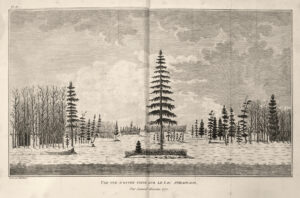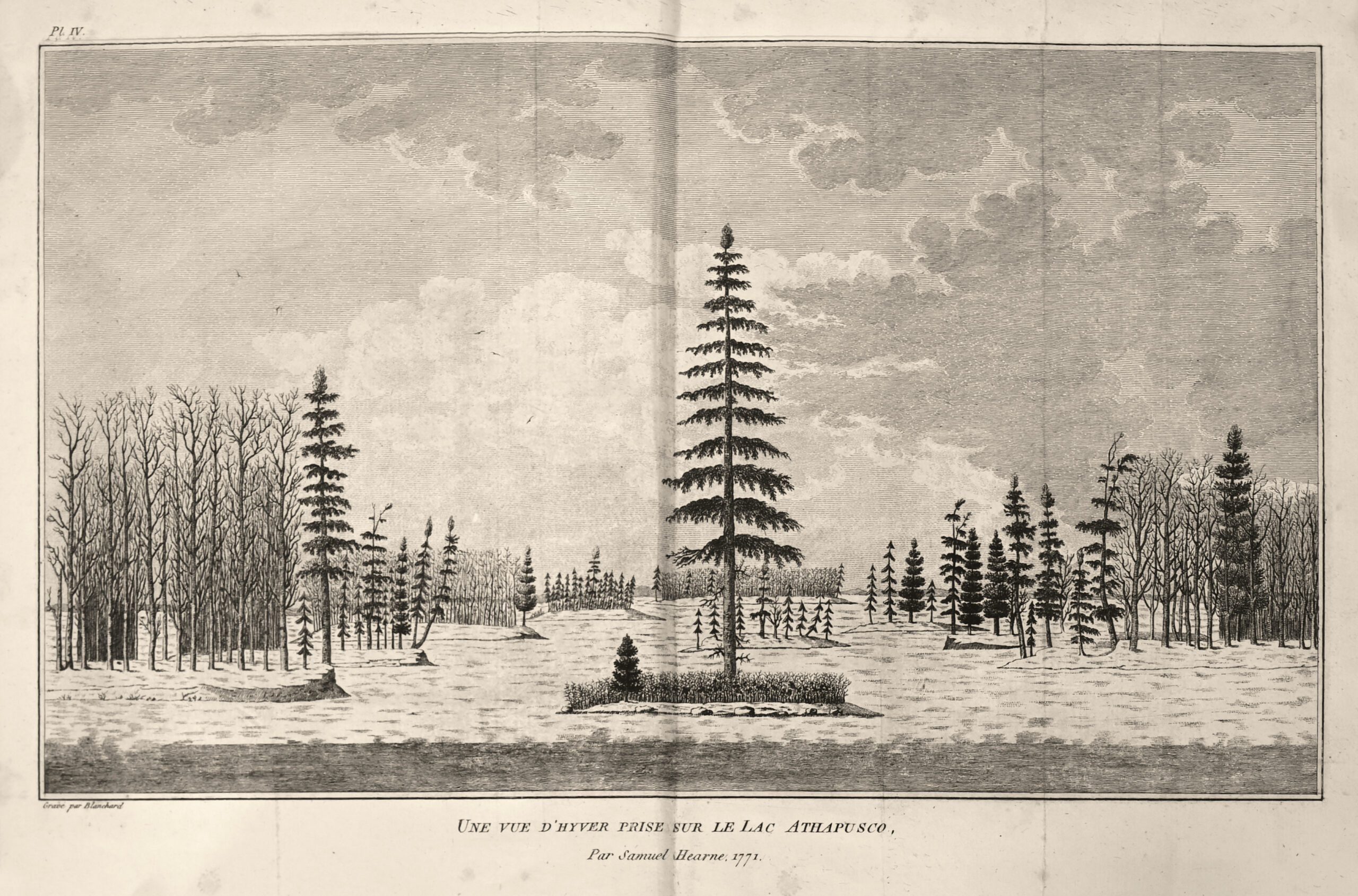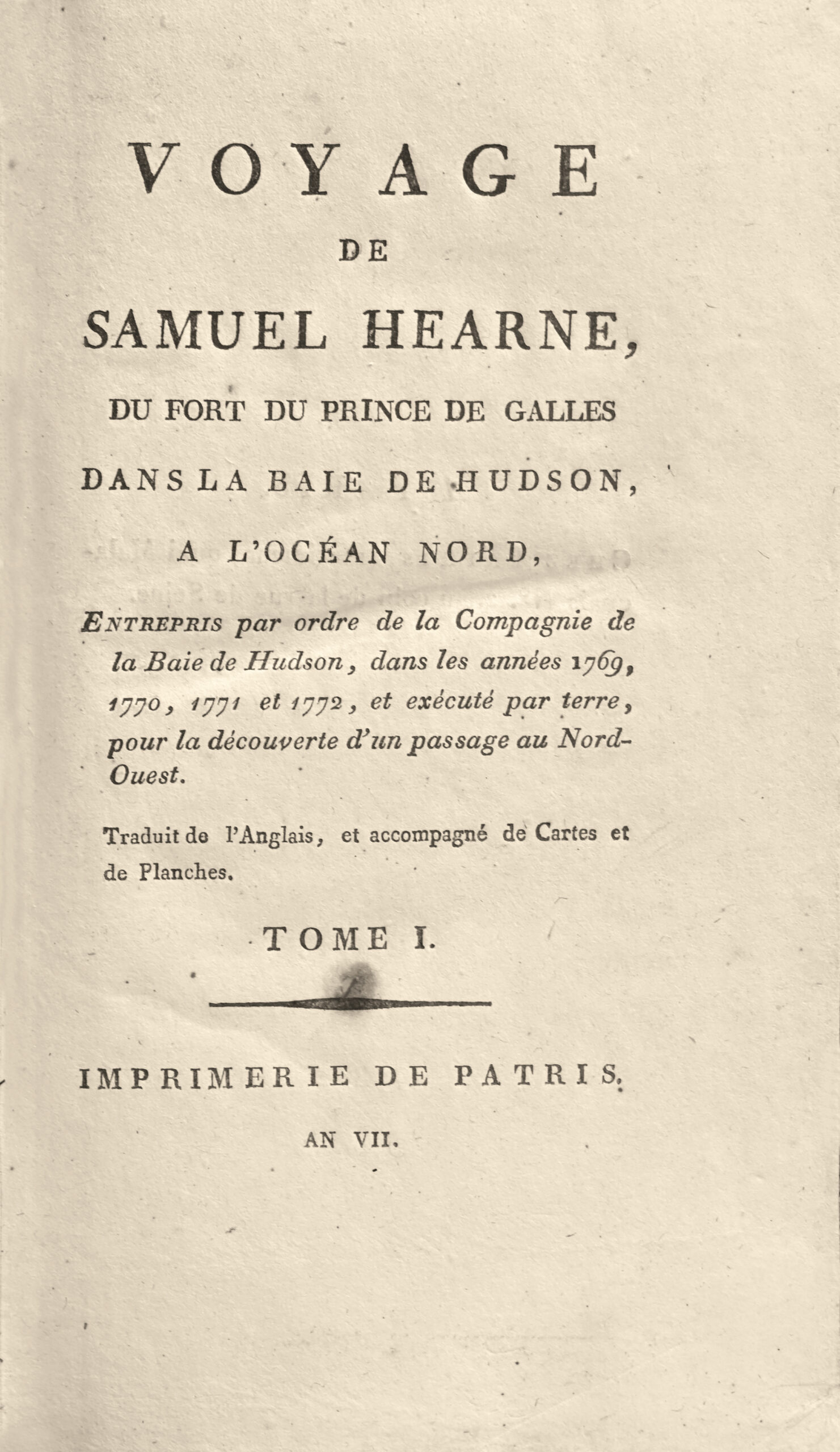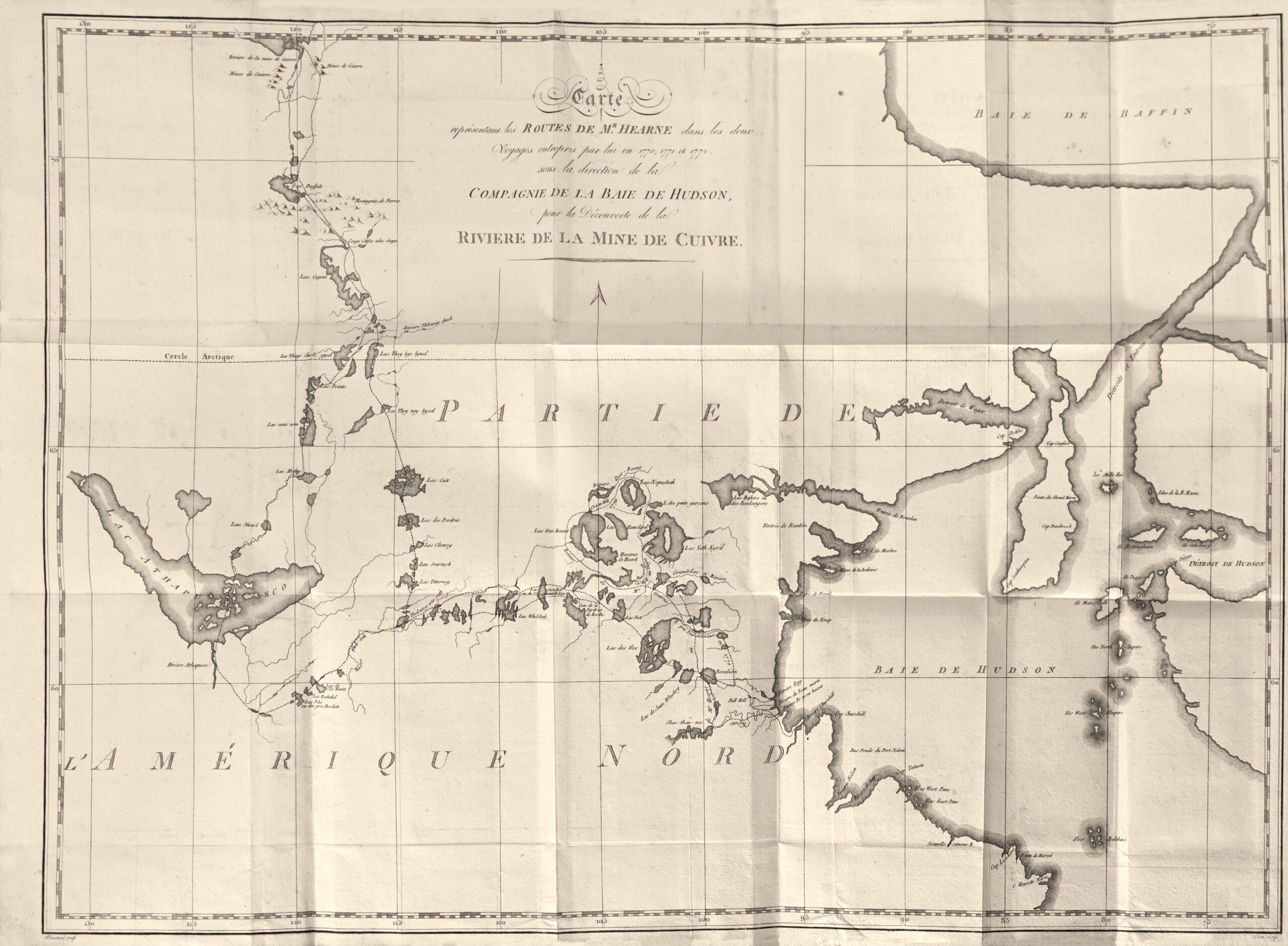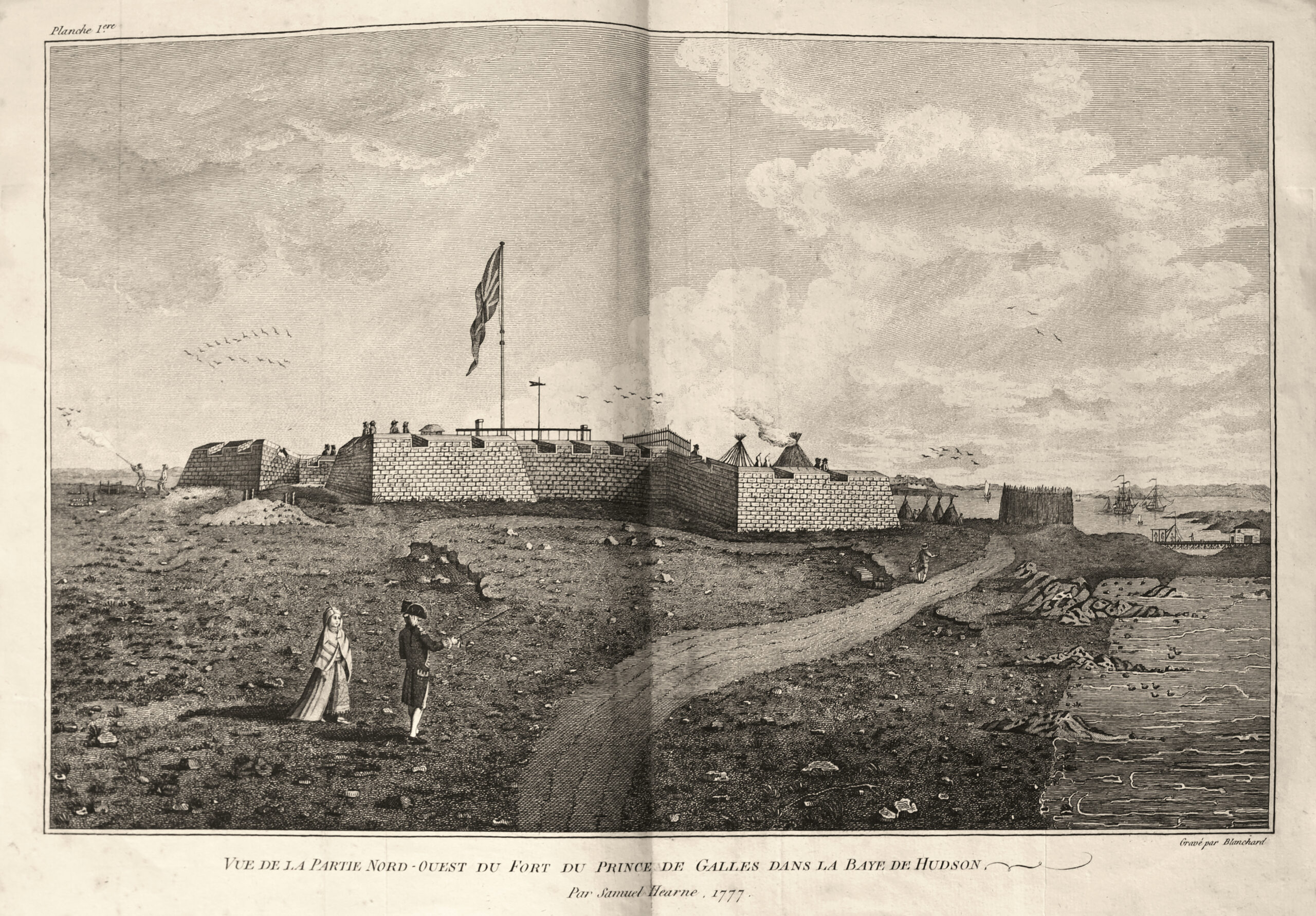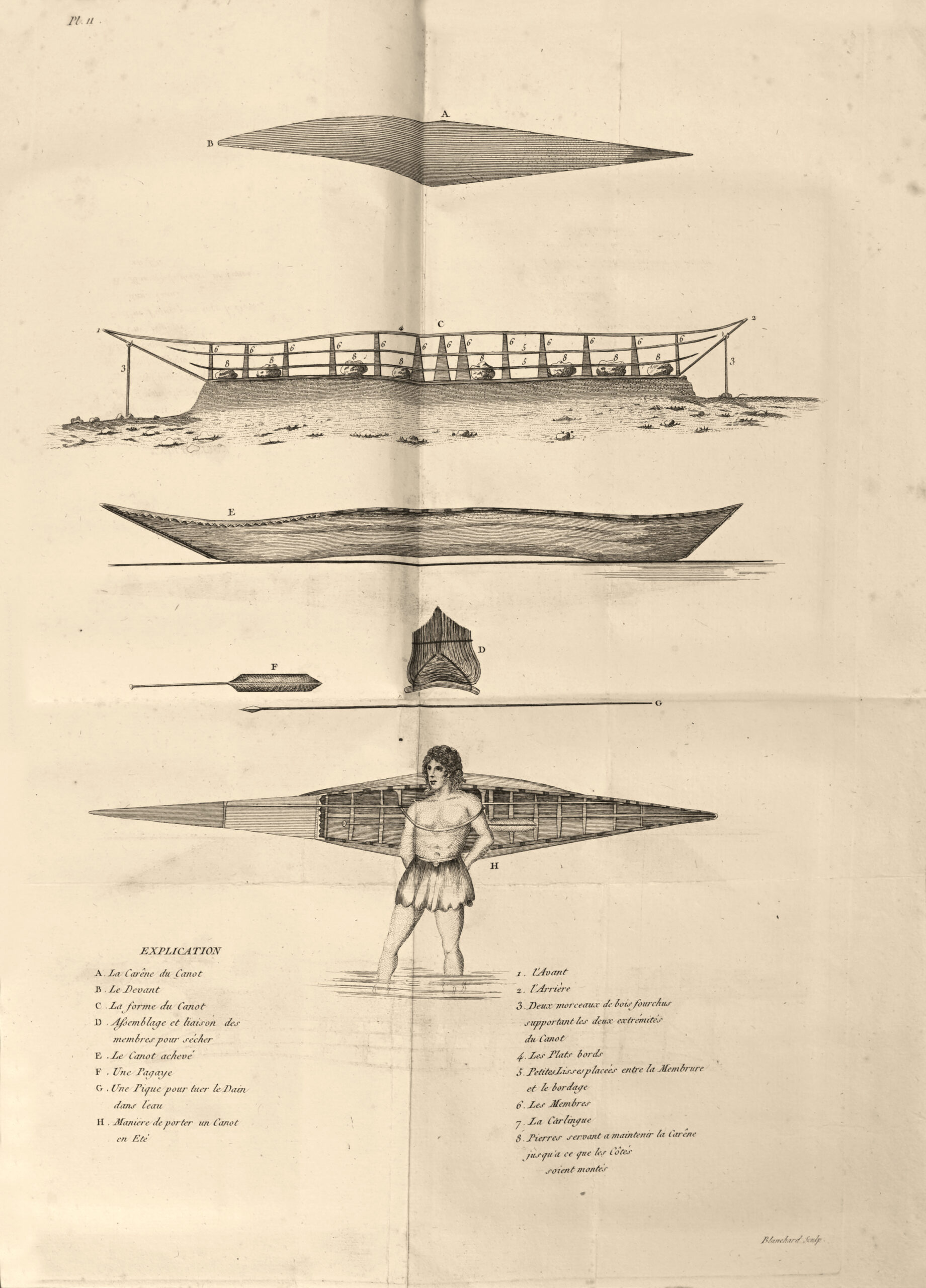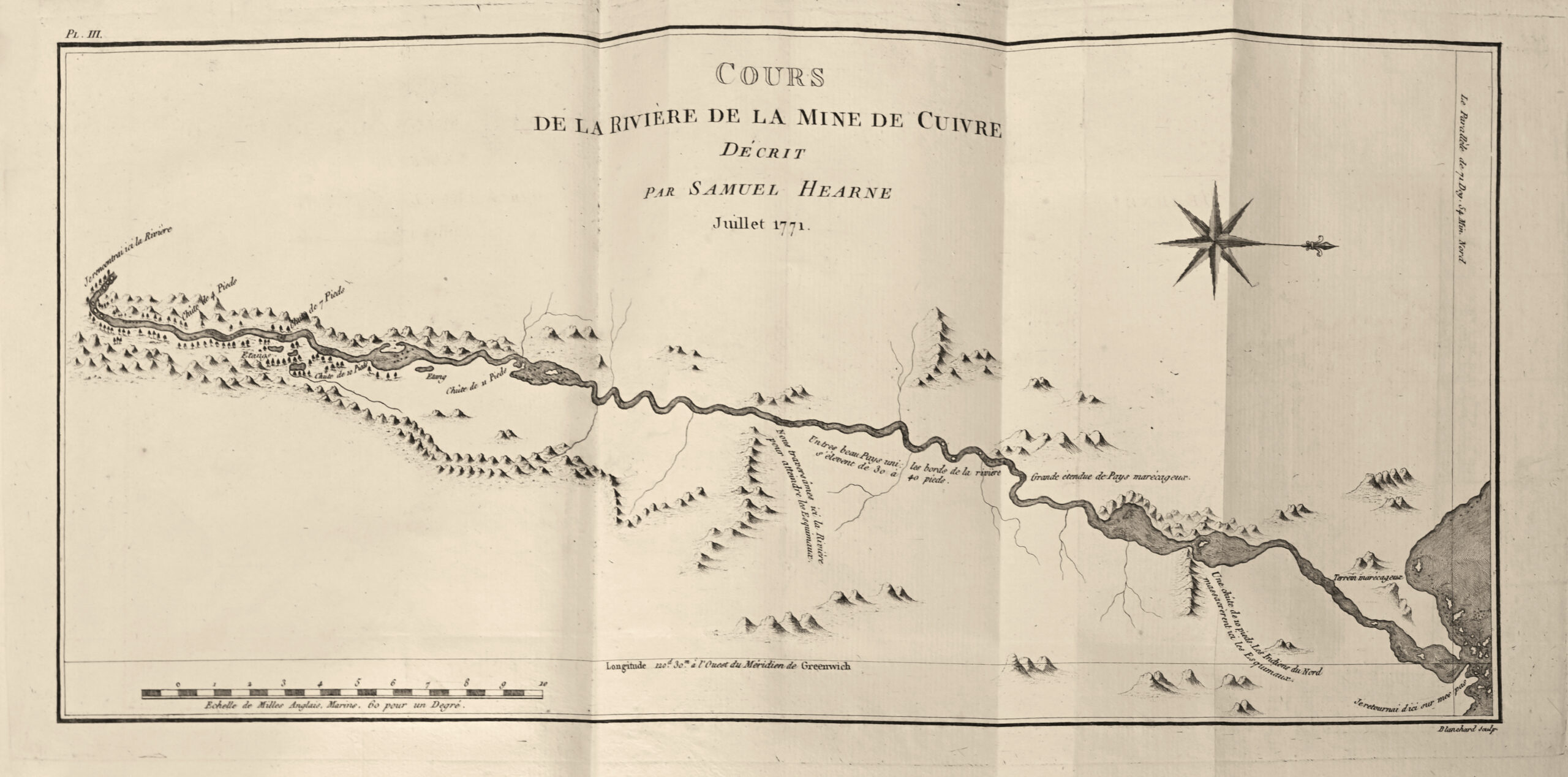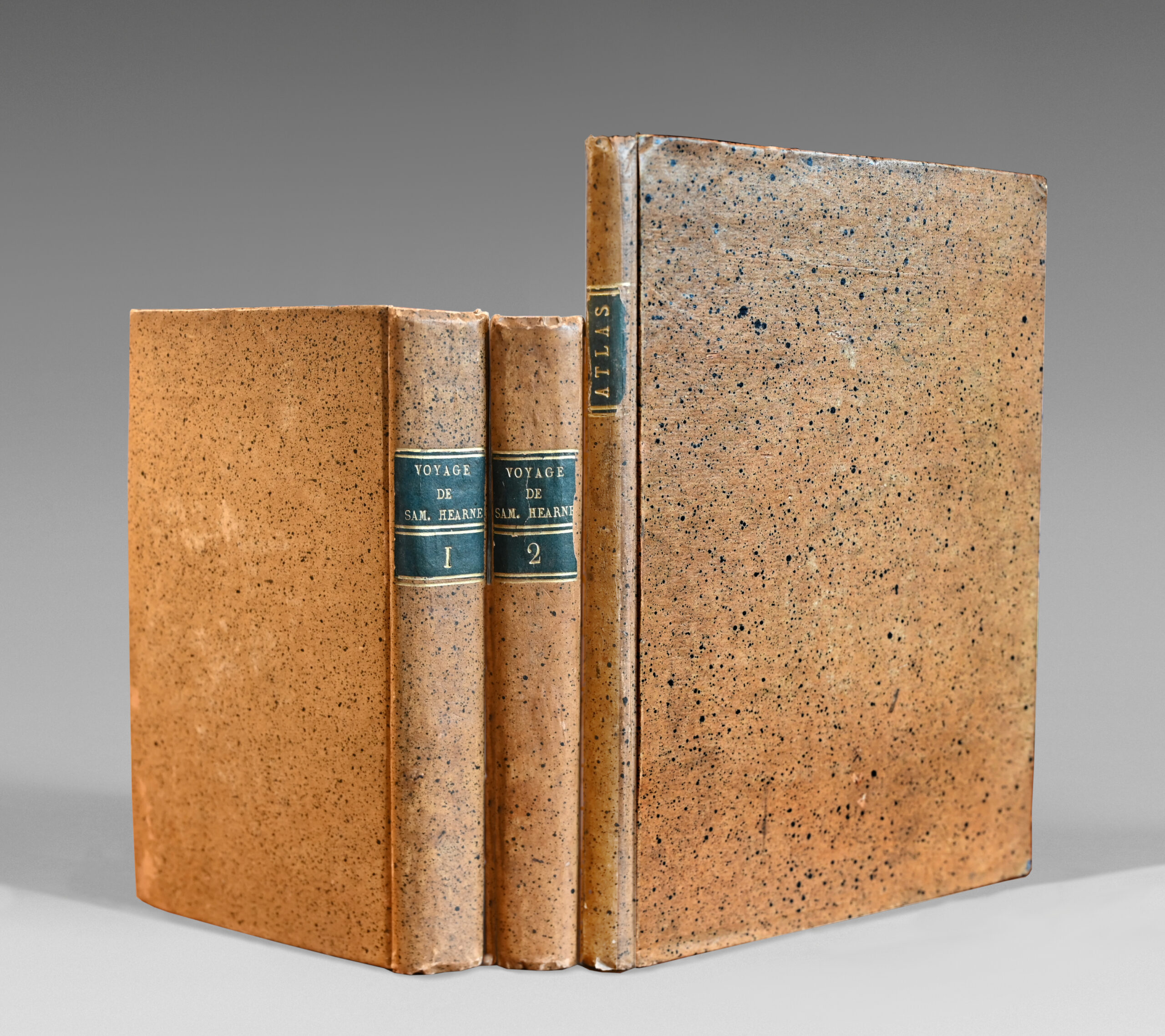Paris, Imprimerie de Patris, An VII (1799).
2 volumes 8vo [206 x 126 mm] of: I/ (2) ll., lviii pp., 373 pp., small loss of paper on the half-title; II/ (2) ll., 332 pp., xxix pp, (2) pp., pp.177-192 and 257-288 misbound, quire 2 with shorter margins; 1 volume 4to [258 x 195 mm] illustrated with 9 numbered plates including 5 maps and 2 plates on double-page, untrimmed, paperboard, flat spine. Attractive contemporary binding.
First edition illustrated with 5 folding maps and 4 plates of this very sought-after travel to Canada.
“It was the first of a long series of Arctic Voyages and travels which reflect so much honor on the British Press. Its publication is due to the celebrated navigator La Perouse who captured Fort Albany, Hudson’s Bay, and found the MS. of Hearne. The fort was afterwards surrendered to the British, but La Perouse stipulated for the publication of this work by the Hudson’s Bay Company, which stipulation was honorably fulfilled in this beautiful volume. “The author will always be remembered as the first white man that ever gazed on the dreary expanse of the Arctic or Frozen Ocean from the northern shores of the Continent of Arnerica.””) (Sabin).
In February 1766, Hearne joined the Hudson Bay’s Company as a sailor on the Churchill sloop, which was then engaged in the Inuit trade of Fort Prince of Wales, in Churchill, Manitoba. Two years later, he became deck Officer on the schooner Charlotte and participated for a short time in the right whale hunting.
In 1767, he found the remains of James Knight expedition. In 1768, he recognized part of the coasts of Hudson Bay for the purpose of improving the cod fishery.
During this time, he acquired a reputation as a snowshoe walker. Hearne succeeded in improving his navigation skills by observing William Wales. The latter was in Hudson’s Bay during the years 1768-1769 after having been commissioned by the Royal Society to observe the transit of Venus with Joseph Dymond.
After joining the Royal Navy at the end of the Seven Years’ War, he worked for the Hudson’s Bay Company where he was employed to explore northwestern Canada in search of copper mines that the Natives had described. He discovered the Coppermine River and traced its course to the Arctic Ocean. He witnessed, without being able to oppose, the Massacre at Bloody Falls, during which twenty Eskimos (Copper Inuit), men, women and children, were murdered by surprise and for no particular reason by their Indian companions, Tchipewyans and Déné Yellowknives. Governor of the Prince of Wales Fort, he was captured by Jean-François de La Pérouse. Author of A Journey from Prince of Wales’s Fort in Hudson’s Bay to the Northern Ocean, he is mentioned by Charles Darwin in The Origin of Species.
The account of his expedition across the Canadian Far North sheds a different light on the customs of the Indians who lived in these regions, rather far removed from the myth of the “good savage”, worthy and ecological. Besides the gratuitous massacre at Bloody Falls, Hearne was shocked by their general lack of moral sense, their attitude towards women (including their own), as well as by their lack of foresight and the waste of bush meat they could indulge in.
In September 1783, Hearne returned to build a modest wooden house (called Fort Churchill) on the exact site of the original post at Churchill. He notes that the British trade situation has deteriorated significantly. The Indian population has been decimated by smallpox and famine due to the lack of hunting supplies such as powder and lead. Matonabbee had committed suicide upon learning of the capture of the fort, and the rest of the main Indians of Churchill had moved to other posts. The assistance of the Canadians, who had now entered the homeland of the Chippewas, was more intense than ever at this time. Hearne, sensitive to criticism of his trade management, had increased whale hunting and the smuggling activities of Orkney’s servants. He claimed to the London committee that he had “served so scrupulously and faithfully to remain a respectable figure in your service.” His health started to decline and he delivered order to Churchill on August 16, 1787.
During his retirement in London, Hearne was appeased by the attentions of scientists and directors of the company. During the last decade of his life, he used his experiences on the moors, on the North coast and in the interior of Canada, to help naturalists such as Thomas Pennant in their research. He also worked on the manuscript of what would become A Journey from Prince of Wales’s Fort in Hudson’s Bay to the Northern Ocean, the book that would establish his claim to fame. His diaries and travel maps from 1769-1772 were not intended for the public, but his interest in geography and largely unexplored interior life had led to their loans by the Royal Society to the Admiralty and to scientists.
During the years after his trip, he continued to compile the material, and Count de Laperouse, when he read the manuscript after his capture, had requested its publication. In this purpose, he had been joined in England by Dr John Douglas, the publisher of Cook and William Wales’ diaries. Hearne’s journey was published in London, three years after his death. Before his death, he had added two chapters on the Chippewas and the animals of the northern regions to the manuscripts and had inserted in his account descriptions of hunting methods, the treatment of women, Inuit artefacts, and the habits of beavers, the muskox and wood bison. His anthropological generalizations are supported by accounts of actual people and events, and his portrait of the Chippewas is one of the best of the entire tribe in the early contact phase. Attached to refuting the critics on the inactivity of the HBC in exploration, Hearne is still philosophical enough to wonder if the Indians of the interior really benefited from the fur trade. The book, intended for specialists and not for the general public, is written in a straightforward style. It had two editions in English, and it has been translated into German, Dutch and French in 1799.
Very beautiful copy with very wide margins, very pure, bound in 3 volumes, the maps and the plates in a 4to format volume which allowed them to be better preserved than in a 8vo volume which would have required multiple folding. Most of the rare known copies are bound in 2 volumes.
Attractive uniform binding in original paperboards.
